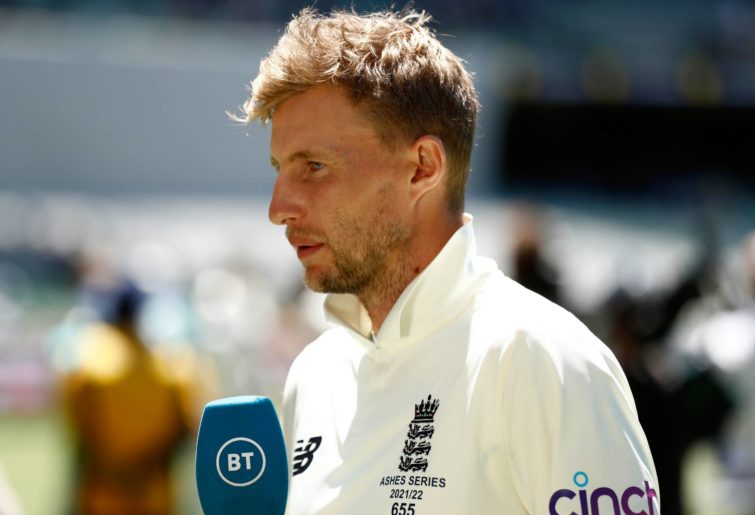Calamitous miss as Lucknow botch near certain run out with the game on the line
With Rajasthan needing 25 off 17, both batsmen ended up at the same end but the bowler dropped the throw from his teammate -…
Opinion
On the eve of the fourth Test in Sydney, the ECB’s Managing Director, England Men’s Cricket Ashley Giles announced the inevitable post-series investigation to find out what went wrong: a tradition as nailed-on as Glenn McGrath’s annual 5-0 prediction.
Following England’s first modern-day Ashes whitewash in 2006-07, the ECB commissioned the Schofield report which recommended a host of changes including the installation of a new managing director, national selector and a director of county cricket.
These were partially adopted and have since been reshuffled again.
The recommendation to scrap 40-over domestic cricket was not adopted, and this competition is now seen as a key influence on England’s limited overs rise and dominance: a generation of England cricketers previously unthinkable emerged, comfortable hitting not just at both ends of the innings, but right throughout the match.
Mr Schofield also recommended the rebranding of the Loughborough Academy to a ‘Centre of Excellence”, something Cricket Australia had installed around 2004. Perhaps most significantly, he recommended a formalised annual training and tour program for England’s fringe cricketers – the foundations for what is now the England Lions.
The years following the Schofield review prompted a focus on Test cricket, to ensure that the love for the game reignited by the 2005 Ashes was not immediately extinguished by the cold shower of 06/07. Over the next five or six years, England became the number one ranked Test team under the stewardship of Andy Flower.
Meanwhile, such a loss at the hands of England, unthinkable for anyone born in the 20 years prior, prompted a review from Cricket Australia. To ensure it could never happen again, the Argus review concluded that Cricket Australia should – wait for it – install a new position of general manager, head selector, and place more focus on Australia A as a genuine second XI.
The next series in Australia was, to use management speak, BAU – England, with none of the meticulous planning and preparation of their previous attempt, were flogged.

Alastair Cook celebrates reaching 200. (Photo by Morgan Hancock/Action Plus via Getty Images)
I’m picking and choosing from a long list of conclusions to demonstrate a point, of course, and that is that such reviews rarely recommend sweeping changes. They are often undertaken more as an act of good, accountable governance than to undertake wholesale change.
A little bit of organisational restructuring here, a little bit of scheduling maintenance there, and the board of directors can pat itself on the back for doing its job well. Where they are most interesting, I feel, is in their insight into the real priorities of each organisation.
And so it was after the 2015 World Cup, from which England were knocked out in the group stages having lost to everyone they played except Scotland. The post-mortem review, sadly unnamed, saw Peter Moores lose his job for the second time and Eoin Morgan keep his. The ECB installed a raft of changes to bring limited overs cricket to the fore of its goals and decision making.
The results of this decision speak for themselves: they finally won the World Cup and have beaten everyone, everywhere. They have unearthed more or less all of their all-time great white ball players in the last six years, and it must be said they have been absolutely exhilarating to watch.
And now the ECB, green-tinged with financial jealousy at the IPL, BBL, LPL, CPL etc etc, is the proud owner of its own franchise-based white ball competition – The Hundred. The white ball project has been an enormous success by any and every measure, and the Test results must be considered in this context.
Prior to the current series, Tim Paine was rightly lambasted in the British media for the insensitivity of his comments that the Ashes would go ahead, with or without Joe Root. Root was one of a number of otherwise unnamed players who had reservations about quarantine, bubble life, and the uncertainty of fixtures given the burgeoning Omicron outbreak in Australia.
But COVID-19, the reason the tour almost didn’t take place, is also the same reason it had to no matter what.
Last financial year, the ECB recorded a 16-million-pound loss due to the pandemic. According to media reports, they lost anywhere between 100 million and 250 million pounds in revenue. A top-to-bottom restructure saw more than 60 staff lose their jobs in a bid to minimise running costs.
These figures would have been much worse, except that Cricket Australia answered the ECB’s SOS call and the players agreed to spend six weeks in a strict bubble in England for the sake of three ODIs and three T20s in September 2020, and all the riches the television broadcasting rights bring.
Judgements around the ECB’s prioritisation of white ball cricket are two-a-penny in the wake of this Ashes loss, but it’s a complicated situation. It’s easy to criticise white ball success during normal times because of its direct alignment with the Board’s main objective of financial success, but during a pandemic that prioritisation helped the organisation survive.
The thing is, Tim Paine was right – the ECB owed Cricket Australia a multi-million-dollar favour.
For whatever bluster the players have mustered around sport’s greatest rivalry and playing for the badge – and make no mistake, their standard has been abysmal – they have been thrown to the wolves by their administrators. This tour was primarily about fulfilling the ECB’s obligations to Cricket Australia with as little a hit to their own bottom line as possible, a decision reflected in every step of decision making.

Tim Paine (Photo by Ryan Pierse/Getty Images)
From the belief that their best XI, if they ever actually picked it, could compete over five Tests on the back of two intra-squad warm up games, to the sending home of the England Lions despite the first team’s performance and the consolidation of a board of selectors and head coach into one very out-of-his-depth man, these decisions make some kind of twisted sense.
That’s particularly the case when the measure of success is nothing more than the series going ahead to its scheduled completion – admittedly no mean feat in Australia during the current COVID outbreak – with minimal financial disruption.
The one glaring omission from this decision making is the fans, of whom this tour has made an absolute mockery. For all the players’ reservations about quarantine, their “resistance” lasted 12 days, less than the 14 they spent suffering in a Gold Coast resort.
Never mind the travelling England fans who did their quarantine in a single hotel room. In issuing a statement of unwavering support despite “fundamental and structural issues in the county game”, the Barmy Army have displayed more commitment and class than the team they support.
There are, believe it or not, threads of hope. The inevitable post-Whitewash review will take place internally or externally.
It will surely recommend dedicated structures for each format, a dedicated selection panel, putting player preparation at the forefront of major tours, and if he hasn’t been sacked by then, should see the end of Chris Silverwood. The public outcry has been enough that the ECB has to do something to its county game, even though the tendrils of progress may take some years to shoot through the undergrowth.

(Photo by Darrian Traynor – CA/Cricket Australia via Getty Images)
According to its website, the ECB spends 14 per cent of its annual income on its three international teams, i.e. the men’s, women’s and disability teams, and an equal amount on The Hundred. Rather than lambasting the Hundred as the doomsayer of red ball cricket in England, its major new revenue stream provides unprecedented opportunity.
The competition can release the pressure on the white ball teams to produce cash, thereby reducing the number of games they have to play. This frees up valuable schedule time for warm up games and Lions tours.
An organisation would not dedicate 14 per cent of its income to something it did not believe would provide a significant return on that investment; it scarcely needs to be said, but some of this income needs to address the broken link between County Cricket and the Test team.
As I said earlier, the pillars of managing cricket organisations don’t seem to change very much – what changes is how far each country strays from those pillars, with the occasional review serving as a reset button. Consider this recommendation*, made by Don Argus in 2011, when the BBL was still in its infancy:
“[we recommend] carefully assessing Big Bash League private ownership implications to ensure private ownership does not incentivise BBL expansion in a way that could compromise Australia’s goal to be the No.1-ranked Test nation.”
The results have spoken for themselves. If the ECB fail to heed this warning, nobody can say they weren’t told. It is just a shame it came to this.